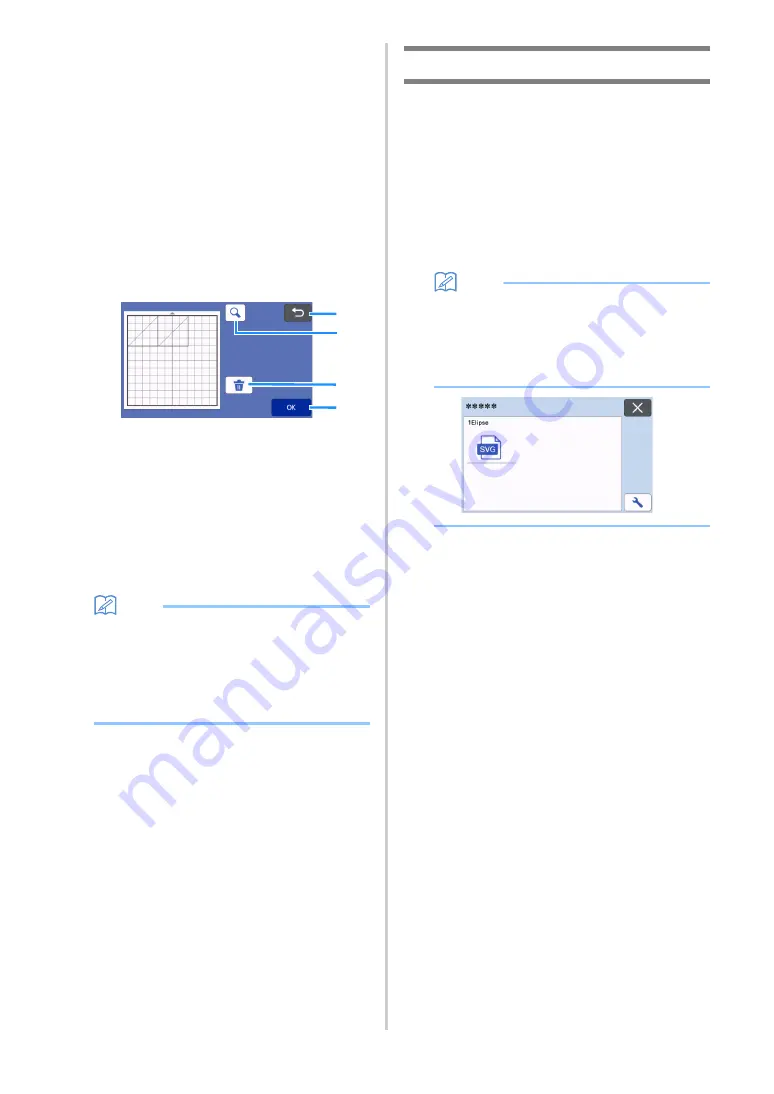
66
c
Retrieve from CanvasWorkspace (via a wireless
network connection).
The transferred pattern from CanvasWorkspace
appears on mat layout screen. For details, see
“Retrieve Transferred Patterns from
CanvasWorkspace (Using a Wireless Network)”
on page 92.
d
Retrieve from CanvasWorkspace (using a USB
cable).
The transferred pattern from CanvasWorkspace
appears on mat layout screen. For details, see
“Retrieve Transferred Patterns from
CanvasWorkspace (Using a USB Cable)
(compatible only with Windows)” on page 93.
d
Check the preview of the pattern layout in the
screen, and then touch the “OK” key.
a
Returning Key
Touch to return to the list of patterns at the
destination.
b
Magnifying Key
Touch to display the patterns in zoom mode.
c
Deleting Key
Touch to delete the data for the displayed
pattern layout.
d
OK Key
Touch to recall the pattern layout data.
Memo
•
Even if a seam allowance has been saved with
the pattern(s) (see “Cutting Around Drawings”
on page 58), the “Seam Allowance” setting
specified in the settings screen will have priority
and will be applied. If necessary, adjust the
“Seam Allowance” setting in the settings screen
(see “Seam Allowance” on page 11).
Importing Designs
■
Importable File Formats
In addition to the FCM format, files in the following
formats can be imported into the machine.
• Embroidery data in PHC/PHX/PES format
(compatible models and via USB flash drive
only): For details, see page 97.
• SVG (Scalable Vector Graphics: vector image
format for describing two-dimensional
graphics) format. “.svg” data is displayed in the
pattern list screen by file name (the actual
image cannot be displayed).
Memo
• The imported vector graphics will appear in the
edit screen after they have been converted.
This feature allows you to import only vector
data. Image, text, width of the line, gradient,
opacity, and any other styles or attributes of line
will not be imported.
a
c
b
d
















































